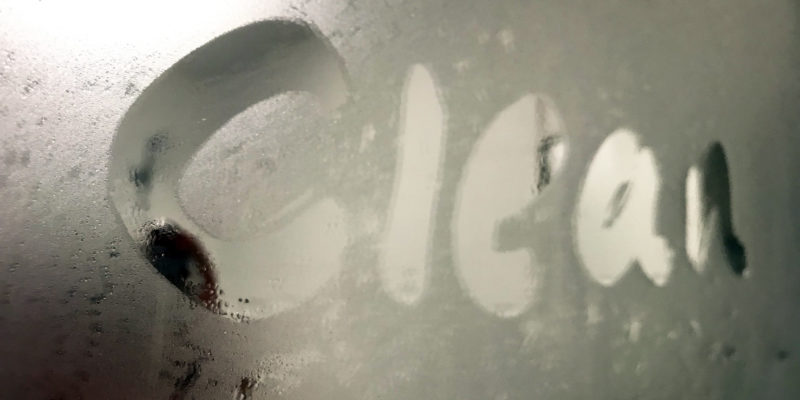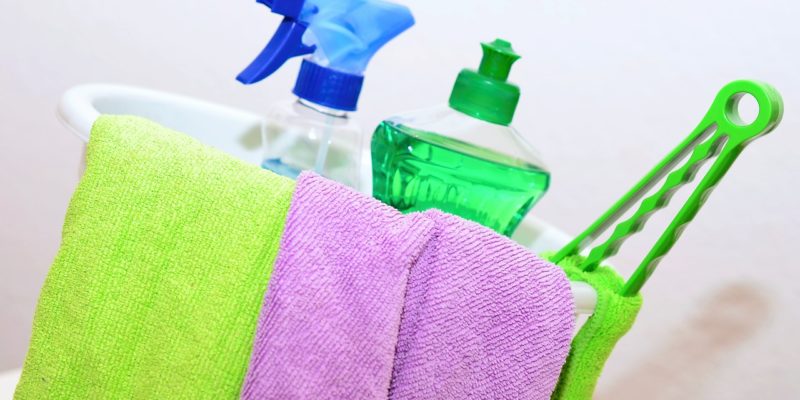Summer is here, so it’s the perfect time to clean your windows to let the sunlight shine on. Window cleaning isn’t the most glamorous job, but the end results are always a pleasure to see. There’s something about perfectly clean windows that’s just incredibly satisfying. Especially when the windows are so clean, it looks like they aren’t even there! But getting those results aren’t always easy. If you’re using the wrong window cleaning techniques, chances are you’ll end up with some streaks.
Window Cleaning Tips: Before You Start
There are a few things to consider before start. Firstly, you don’t want to clean your windows on a hot, sunny day. While a sunny day might seem like the perfect “window cleaning weather”, it’s actually the opposite. Your window cleaning solution will dry far more quickly on a hot day. When water dries on your window, it’s almost sure to leave a mark.
Next, you need to consider the current state of your windows. You’ll need to choose the ideal window cleaning technique to use based on how dirty your windows are. If your windows are only a little dirty, there are plenty of quick and easy window cleaning methods that don’t require harsh chemicals.
The last to check before you start cleaning is dust. Dust not only accumulates on windows, also check the caulking, window sills and other areas. Also remember to look both inside and outside! If you find any dust, cleaning away the dust before you start to clean your windows can make your job a lot easier.
Assuming the weather is cool (perhaps even slightly cloudy) and your windows are dusty, the first thing you’ll need to do before you start cleaning is to vacuum clean. You could use a normal household or industrial vacuum cleaner for this, but a specialized window vac would make things a lot easier. Vacuum both the inside and outside of your windows before you proceed with cleaning them.
If you don’t want to vacuum clean your windows, you could remove dust by brushing or sweeping it off. Just be prepared, because (depending on how dirty your windows are) doing this could simply transfer all the dust, cobwebs and other debris from your windows onto the floor.
Cleaning Windows that Aren’t Too Dirty
If your windows aren’t too dirty, cleaning them can be relatively effortless. If your windows aren’t really dusty, but there are some fingerprints and perhaps even water stains you’d like to remove, there are a few ways you can go about cleaning them.
The simplest method is by using a microfiber cloth and some homemade window cleaner, vinegar or a window cleaning solution of your choice. Simply spray some of your cleaning solution onto the window and wipe it away with a dry microfiber cloth. Just make sure you use a good, high-quality cloth.
For cleaning windows, microfiber cloths with a tight, yet fine weave are best. Think about the kind of microfiber cloth you’d use to clean your glasses’ lenses or polish your car mirrors – that’s the kind of cloth that will get you the best results when cleaning windows too.
If you prefer a more old-fashioned approach, then a squeegee is a great option. Cleaning your windows with a squeegee will require more steps, but a lot of people still prefer it. If you struggle with any streaks after you use your squeegee, you can always still use a microfiber cloth to wipe up any dampness after using the squeegee.
Avoid using paper kitchen towels though. Paper towels will just leave lint deposits all over your window. If you don’t have any microfiber cloths, crumpled newspaper is a better choice than kitchen towels.
Crumpled newspaper polishes windows without leaving behind too much lint. Unfortunately, this can scratch your windows a bit and you’ll need a decent supply of old newspapers if you’re planning to clean a lot of windows. When a piece of newspaper gets soggy it will also start to shed a lot of lint and will no longer do a good job of polishing your windows.
Cleaning Normal Dirty Windows
Not everyone can clean windows very often. A lot of people only start noticing their windows once they’re already quite dirty. They might have a thin coating of dust on the outside, and some fingerprints and stains on the inside. Although your windows might not be ideally clean, they’re still far from making the place seem like an old, abandoned warehouse.
If your windows sound like the ones mentioned above, vacuuming (or brushing) them before you start to clean them will make your job a bit easier. Most windows gather dust on the outside before they start to look dirty on the inside, so focus on the outside panes while you dust.
Once you’re done dusting, you can decide whether you want to try a microfiber cloth or a squeegee to clean with. If you find that your microfiber cloth is collecting dirt and grime too quickly, it’s probably best to back up and opt for cleaning with a squeegee instead.
Alternatively, you could try to clean the outside areas of your windows by pressure cleaning them. Pressure cleaning isn’t something you can do yourself. You’d need to hire a professional power cleaning company to handle the job for you, but it could make the job a lot easier.
Cleaning Oily Windows
There are a lot of things that can dirty a window to the point of being plain filthy. Perhaps you have a window in a kitchen that’s close to an oven. Oil and food spatters can easily build up and if left for a while, the results can be nightmarish to clean.
Kitchens aren’t the only place where windows can be prone to oil spatters and stains though. Automobile workshops often suffer the same fate, as motor oil is often everywhere, including the windows.
The first thing to note about oil spills on windows is that microfiber cloths won’t be effective to clean them. It’s better use an abrasive sponge and a cleaning solution that can dissolve the oiliness. Vinegar could work in many cases, but if the windows are seriously oily dishwashing liquid or a professional window cleaning solution might work better.
Gently scrub away the dirt and grit with your abrasive sponge. After this, you can wipe or rinse away the residue and follow up this cleaning with a regular microfiber cloth a squeegee clean.
If you have residue buildup on the outside windows of your building, pressure washing can also be an option, although it’s not common for windows to get a lot of oil stains on the outside panes.
Cleaning Very Dirty Windows
At some point, you might be left with the task of cleaning windows that do, in fact, look like they belong in an old, abandoned warehouse. This is exactly the kind of window cleaning work everyone likes to avoid, but you simple can’t always escape it.
Windows that haven’t been cleaned in a long time can have mold, dust, grime and even paint stains. If you see any mold growing on your windows, it might be best to call in a window cleaning company to do the cleaning. Professionals will know how to follow the right safety measures to avoid inhaling mold spores, or possibly even spread them to new areas.
If you have paint stains on your window, you can either scratch it off using a sharp razor blade and your chosen window cleaning solution, or you could wipe it off by using turpentine or paint thinner. If you choose to wipe stains away by dissolving the paint, just be sure to keep old rags or paper kitchen towels ready. You’ll need to work fast to wipe away the solution of paint and turpentine before it dries on your windows.
Professional Window Cleaning Services in Miami
Sometimes cleaning windows yourself just isn’t worth the time and effort. After all, you don’t have the same equipment and level of experience as professionals do. Calling a professional window cleaning service is good if you want to save time, but there are instances where it can be absolutely necessary.
If your windows are high up, or if they are dirty enough to pose a health hazard, hiring a window cleaning company is definitely the best choice. Both these scenarios can pose risks that trained professionals will know how to deal with.


